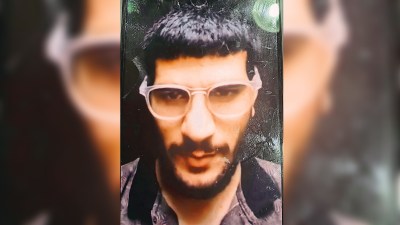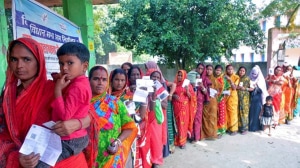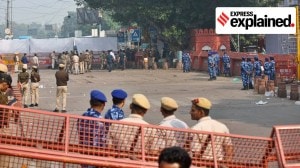How AIIMS helped eliminate one of the world’s leading causes of blindness
WHO lauds India's mission to eliminate trachoma
 Congratulating India, its director-general, Dr Tedros Adhanom Ghebreyesus, said India’s elimination of trachoma as a public health problem is testimony to the country’s commitment to alleviating the suffering that millions had faced.
Congratulating India, its director-general, Dr Tedros Adhanom Ghebreyesus, said India’s elimination of trachoma as a public health problem is testimony to the country’s commitment to alleviating the suffering that millions had faced.In 2010, the All-India Institute of Medical Sciences (AIIMS) sent its team to Nicobar islands to cross-check the prevalence of trachoma, a bacterial infection of the eyes which can lead to blindness if left untreated. They found that more than 50 per cent of children had been affected.
“We provided azithromycin to the entire population of Nicobar island for three years. When we did a repeat survey in 2013, we found that 50 per cent cases had been reduced to 6.5 per cent,” says Dr Praveen Vashist, head of the community ophthalmology department at AIIMS RP Centre. This intense surveillance and follow-up drill is the reason that India has been able to eliminate trachoma as a public health problem, a fact acknowledged by the World Health Organisation (WHO).
Congratulating India, its director-general, Dr Tedros Adhanom Ghebreyesus, said India’s elimination of trachoma as a public health problem is testimony to the country’s commitment to alleviating the suffering that millions had faced. “WHO has worked closely with India to realise this achievement, and we congratulate the government, health workers and partners who have collaborated to make it possible,” he said.
What is trachoma?
Trachoma is a bacterial infection of the eyes which happens due to lack of hygiene and an unclean water supply. It is highly communicable and can spread through contact with eye, nose, or throat secretions of an infected person or indirectly via flies. It continues to be a leading infectious cause of blindness worldwide.
Why was trachoma such a challenge in India?
That was because it kept coming back and infecting communities. According to Dr Vashist, trachoma was one of the major causes of blindness in states like Punjab, Rajasthan, Gujarat, Haryana, Western Uttar Pradesh and Delhi in the 1950s. It continued to be so for decades, emerging as the leading cause of blindness in India between 1971 and 1974.
“These states were labelled as hyper endemic states as the prevalence of the infection among children was more than 50 per cent,” says Dr Vashist. However evidence over the next two decades showed a significant reduction in prevalence.
By 2005, trachoma was responsible for just four per cent of all cases of blindness in India. A survey in 2006-2007 found that the prevalence was not as high as reported by the WHO.
That’s when the government decided to conduct a rapid assessment in the previously known hyper-endemic states in India. The districts covered were Hoshiarpur (Punjab), Mahendergarh and Mewat (Haryana), Bikaner, Dholpur and Tonk (Rajasthan), Pauri Garhwal (Uttarakhand), Bulandshahr (Uttar Pradesh), Kutch and Banaskantha (Gujarat).
In 2010 the government received information about the high prevalence of trachoma in Nicobar islands. Given the sporadic return of the disease, “we did surveys from 2014 to 2017 in collaboration with the WHO. We screened around 27 districts and examined more than 1 lakh people in both endemic and non-endemic areas. We found that trachoma had been eliminated in children but as per WHO guidelines, it had not been eliminated in adults,” says Dr Vashist.
More intense and microscopic surveillance and data collection followed and by 2018, the prevalence of trachoma was down to 0.008 per cent. A series of impact, pre-validation and trichiasis-only surveys were completed in 2024, confirming that elimination targets had been met in all previously endemic evaluation units.
A Regional Dossier Review Group thoroughly reviewed a dossier documenting India’s achievement and recommended WHO to validate national elimination of trachoma as a public health problem.
What steps prevented the spread of the disease?
The government adopted strong measures like treatment with antibiotics, surgeries and also micro-level awareness drives on preventive measures like facial cleanliness, maintaining hygiene standards and ensuring availability of clean water.
India also developed a post-validation surveillance plan to ensure sustained impacts of trachoma elimination efforts. Saima Wazed, regional director, WHO South-East Asia Region, says India worked together with partners to ensure effective surveillance, diagnosis and management of active trachoma, provision of surgical services for trichiasis, and promotion of water, sanitation and hygiene, particularly facial cleanliness, among communities to ensure people of all ages can now look towards a trachoma-free future. Initiatives like Swachh Bharat Mission and Jal Jeevan Mission helped eliminate the infection.
What does WHO declaring India trachoma-free mean?
According to Dr JS Titiyal of WHO, it matches the polio-free status that India already has. “The presence of trachoma is indicative of a poor water supply and sanitation facilities, usually associated with challenges of a developing country. With its elimination, we can say that there has been improvement in our public health standards,” he says.






- 01
- 02
- 03
- 04
- 05

























